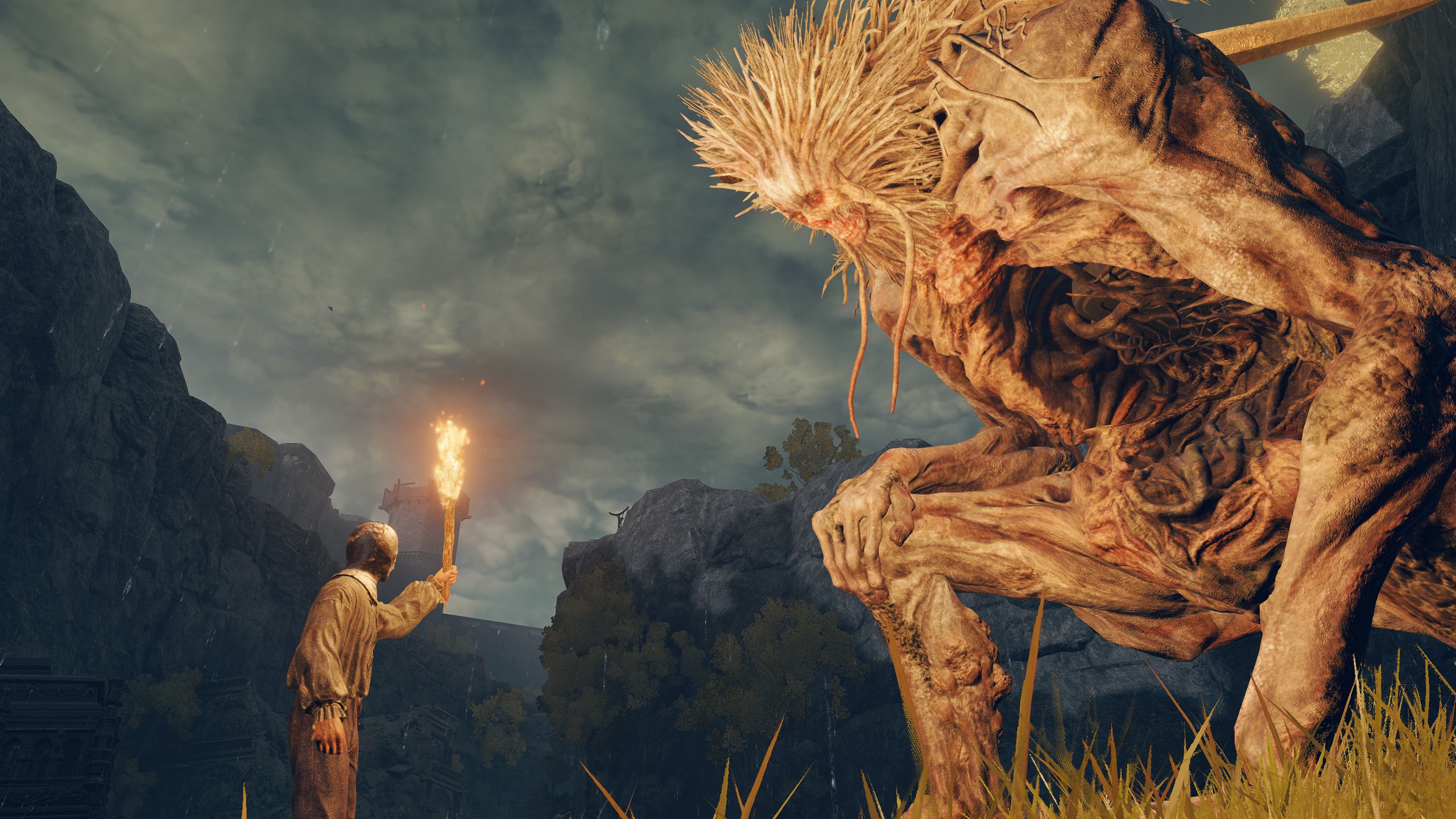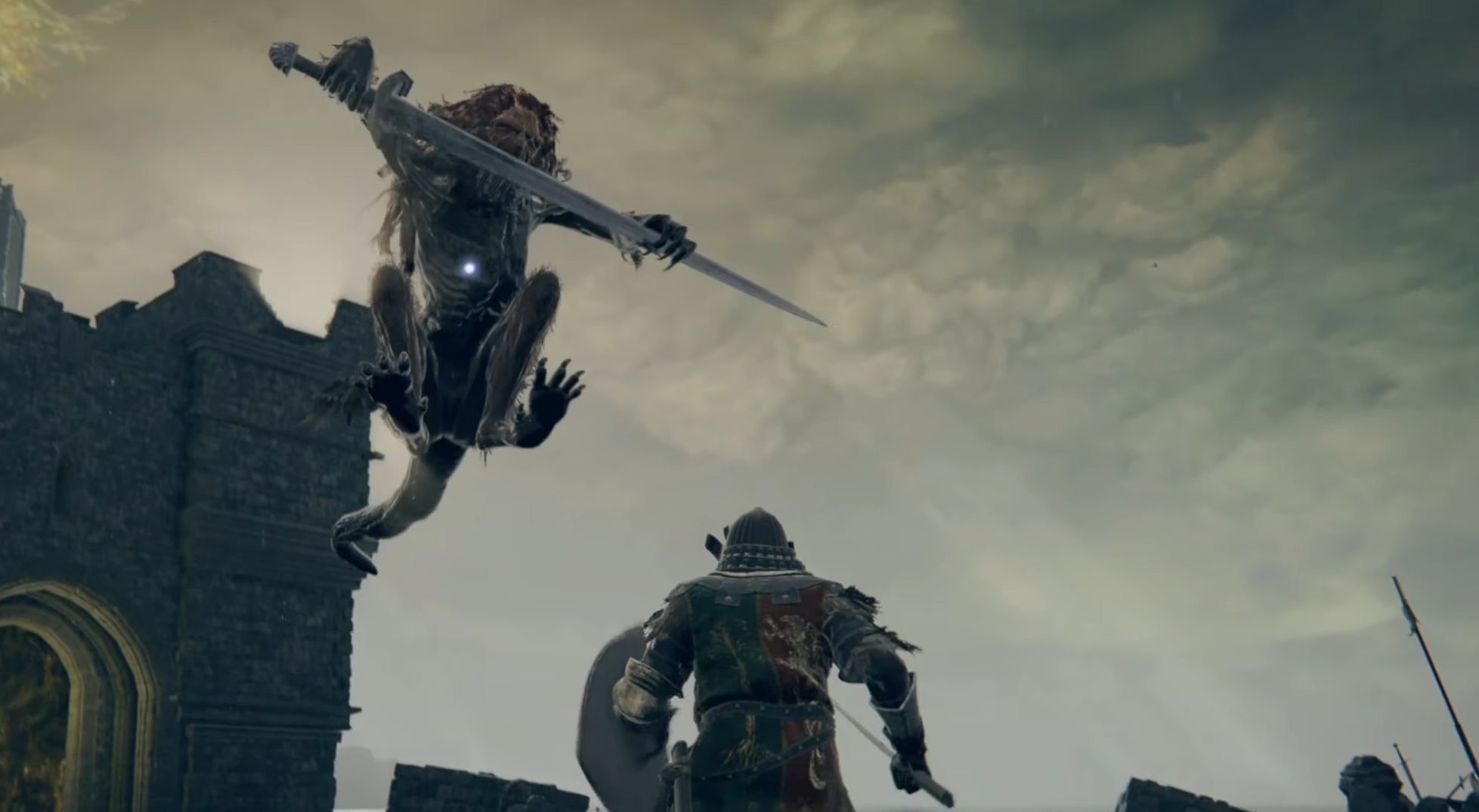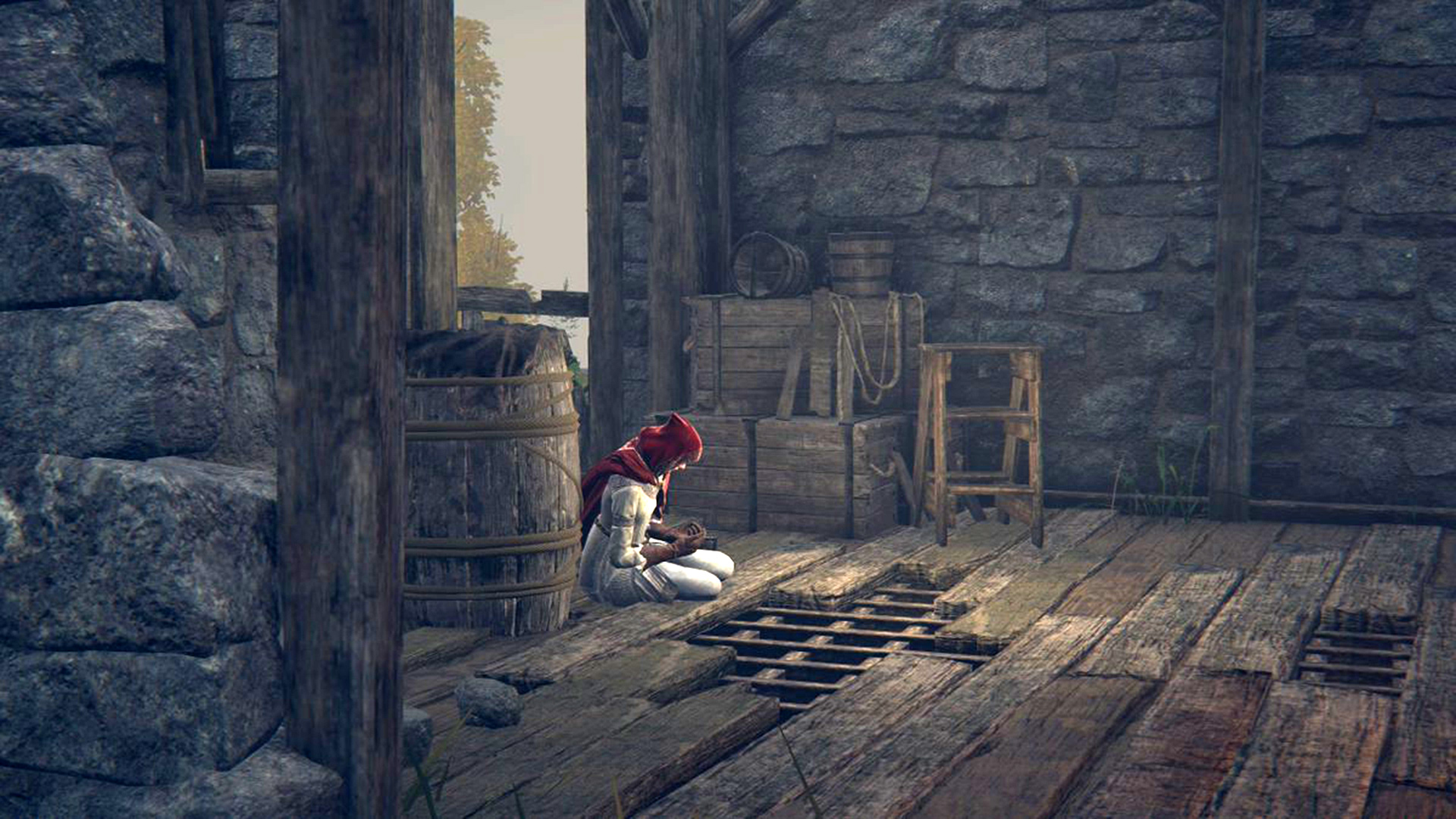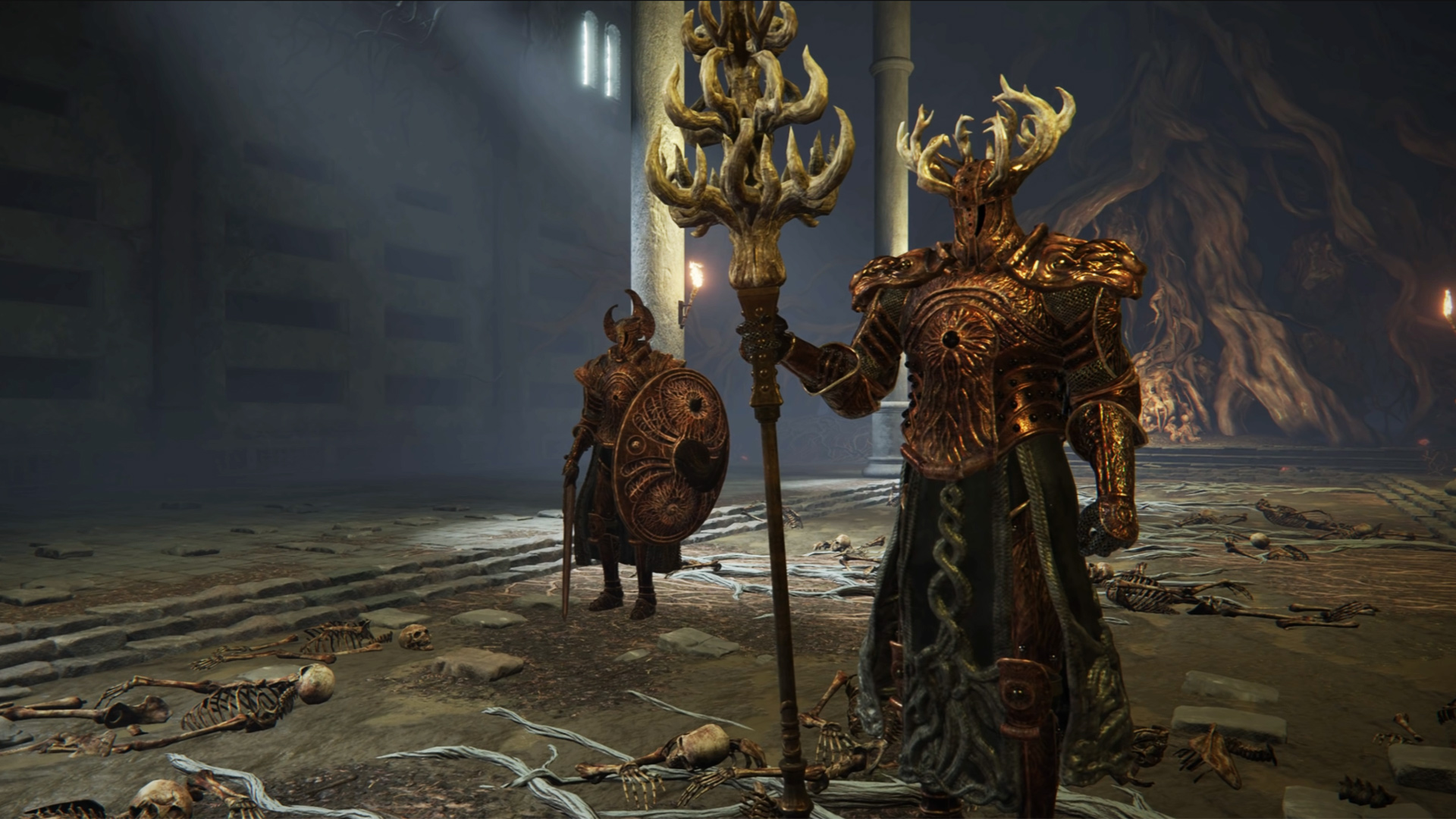Elden Ring's horror is better because it's not dark and gloomy
The Lands Between exposes its monstrosities to the light, and that's how I like it.

There were all sorts of questions on players' minds before the release of Elden Ring about how a Dark Souls experience would translate to an open-world structure. How could Elden Ring capture that fear, the claustrophobia, that punishing atmosphere when players have all that room to escape? Well the answer is because Elden Ring doesn't need to hide its horror. Elden Ring shows you what's going to mess you up in the brightest of daylight.
In the medium of film, projects like Midsommar or The Wicker Man have explored how ghastly things can happen during the day. Horror isn't just about things going bump in the night—terrible happenings are maybe at their worst when shadows can't shroud them. There is nothing to hide. Ari Aster, director of Midsommar, deliberately wanted the film to feel as if it was a fairytale, a folk story with those traditional horror elements. And Elden Ring explores that same feeling within the realm of gaming.

Elden Ring loves to show you just how terrible it can be
I've spent a fair amount of time in Dark Souls and Bloodborne. In these games, there is very much a feeling of being locked in with monsters. Small corridors, dark rooms, thick, choking smoke surrounding you. Whatever is in this city, this room, this shack, this castle is ready to kill you. It's waiting for you to look the wrong way, to fall for a trap, to forget to look up before stepping into unknown territory.
But Elden Ring mechanically does almost the opposite. Sprawling fields, wide open spaces, and often ample opportunity for you to see what will crush you before it happens. Not only that but if you do see a horrific monstrous being that intends to crush you, you can occasionally gallop around it without it ever seeing you. Elden Ring loves to show you just how terrible it can be and tells you to run screaming in the opposite direction, and I love that approach.
In Morneing
The horror of Castle Morne, for example, is palpable even before you get there. You're led south by the clear winding road, crossing a fiercely guarded bridge, and coming across a young blind girl, Irina, with her murdered companions by the road. When you reach the castle, you stare in wonder at the beauty of the cuboid architecture before screaming in fear as a massive magical android fires an arrow the size of a lamp post at you. You're not welcome here. Something is very wrong.
Stepping into the castle and coming up that lift into the main courtyard is hair-raising. Irina's eyes couldn't see how awful the rebellion was. She couldn't warn you of the horror of the piled bodies, the sickly amalgamation of the misbegotten, or the corpses hanged in abundance from the rafters. Even though these bodies are of soldiers whose remnants have attacked you a dozen times already, you're repelled. This was a slaughter of hundreds. It's ghastly. And all that fear is achieved without the small corridors and choking smog of Elden Ring's predecessors. Nothing is hidden from you. It's just awful ramifications in an open air amphitheatre.
FromSoftware manages this time and time again. Elden Ring's open structure grants the studio lots of real estate to express the corruption of the Lands Between, and the relationship between its many zones. In Caelid, you can smell the earth and bodies rotting beneath you as you ride across the land. Life has never looked more dire than when it's this colourful and bright. It's as clear as day.
Keep up to date with the most important stories and the best deals, as picked by the PC Gamer team.

The horror of Elden Ring perverts these common expectations
NPC Rodericka's story starts with the young woman sat in a dilapidated shack, admonishing herself for not having the courage to die in the most horrible of ways. She talks in almost delight at the idea of being grafted. Of being ripped limb from limb and being attached to a writhing pile of parts. She calls it a lark. And you can only cringe at the idea.
And perhaps against expectation, some of Elden Ring's darkest areas, like the underground, are way less scary. Take the Siofra River. Coming down the well lift for the first time is very different from arriving in Castle Morne. Instead of disgust, you're filled with wonder and surprise as you descend. Down here, in what should be the darkest, dimmest area you've come across so far, you find beauty exceeding even perhaps the Erdtree. Conventions would lead you to believe that down is closer to hell, just like in Dark Souls' Demon Ruins and Lost Izalith. And up, like Anor Londo, would be closer to heaven. FromSoftware turns this on its head. The horror of Elden Ring perverts these common expectations.
Every oppressive, stuffy room in Bloodborne is terrifying in its own way, and coming across the Nightmare Frontier, a more open area, is horrid too. But I prefer the horror Elden Ring explores. Other FromSoftware titles scare you with things stepping out of the mist, or something grabbing you from around a corner. In Bloodborne, some of the most horrifying monsters are shrouded more literally for a later reveal. Elden Ring provides plenty of safe areas for the player, room to ponder and take in its elegant landscape, but it's all the more upsetting that these areas intermingle with the evil, that there are fewer hard barriers separating them.

Creep
There are still jumpscare moments in Elden Ring though. Maybe the most horrible monster conceptually is the hand spiders, also known as Fingercreepers. FromSoftware really thought of the one way to make spiders more horrible than putting Patches' head on one in Bloodborne—making them hands instead. The beginning of the Caria Manor area is fraught with the hand monsters hanging out above you and buried below you, waiting for you to take a wrong step. The first time you're caught by one, you're chewed up in a palm or simply run away in revulsion. And even after falling for their trick once, you spend the rest of your time doing anything to avoid those flexing, straining fingers.
Horror this year is doing everything it can to subvert expectations. Ghostwire: Tokyo is almost like Elden Ring's direct opposite in atmosphere. In our review, I found that though its themes were nestled within horror tropes—understandable considering Tango Gameworks' The Evil Within games—it subverted expectations by using these horror elements in action combat. Out on these darkened Tokyo streets, between the pluming fog and neon signs you see horrible slenderman, ghosts and ghouls: but you don't fear them. Actually they should fear you, because the game gives you good tools to counter every attack they have. It's fascinating that games with such visual juxtapositions, one a beautiful fantasy adventure and the other a neon horror, achieve such different levels of trepidation in practice. What should be scary isn't and what seems like a medieval adventure will show you your new sleep paralysis demon. And it suits them just fine.
Elden Ring's beasts are handsome and horrid. Bloodthirsty and balletic. They're everything right with supernaturally wrong monstrosities. FromSoftware showcases off how horrible things can be when the sun shines brightest, and fills The Lands Between with dazzling dread.
Imogen has been playing games for as long as she can remember but finally decided games were her passion when she got her hands on Portal 2. Ever since then she’s bounced between hero shooters, RPGs, and indies looking for her next fixation, searching for great puzzles or a sniper build to master. When she’s not working for PC Gamer, she’s entertaining her community live on Twitch, hosting an event like GDC, or in a field shooting her Olympic recurve bow.

